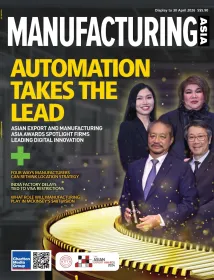Cobot deployment faces barriers in Industry 5.0 shift
Safety, system integration, and data readiness are key challenges slowing cobot adoption.
The rise of Industry 5.0 has sparked strong interest in collaborative robots, or cobots, as manufacturers look to boost productivity by combining human skills with machine precision. But despite the hype and rapid market growth—estimated at nearly 30% annually—experts say key obstacles are limiting cobot deployment at scale.
Nigel Lee, Country General Manager at Lenovo Singapore, pointed to three main challenges: leadership understanding of AI, data availability, and cybersecurity risks.
“The first challenge is really having executives understand what AI is, and how AI works with cobots,” he said. “The second challenge is: do they have the data to make the cobots work for them?... And the third is cybersecurity. Any system in the cloud can be hacked.”
Easwaran Subramanian, Deloitte Asia Pacific’s Supply Chain and Network Operations Leader, added that safety remains a fundamental concern. “How can we have cobots operate safely alongside humans without causing harm remains the foundational concern,” he said.
Subramanian explained that many cobots require advanced sensors and environment mapping to operate safely in dynamic conditions. “They must be equipped with multimodal sensors… and real-time feedback systems that can monitor and trigger safety actions.”
Another major barrier is legacy infrastructure. “Most organisations have a lot of legacy systems not built for cobot communication,” Subramanian said. “Integration requires modern middleware and protocol compatibility.”
He also flagged cost as a limiting factor for smaller manufacturers, noting that scaling cobots can be less feasible without a high return on investment. Programming complexity and the need for skilled operators also remain obstacles.












